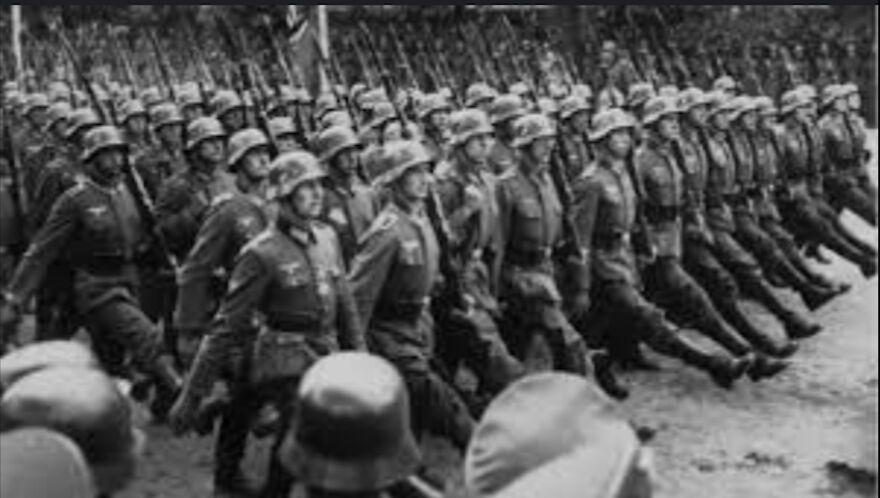World War II Disadvantages – Wikiwar1939
Involving more than thirty nations around the world, World War II was the most widespread war in history. Beginning with the German blitzkrieg of Poland in 1939, between 1939 and 1945, the world was embroiled in a total war between the Allied Powers and the Axis Powers in which an estimated number of between 45 and 70 million people were killed. The Allied Powers was an alliance consisting of nations such as but not limited to Great Britain (as well its colonies and dominions such as Canada, Australia, and India), France, USSR, China (to a lesser extent), and later the United States following the Japanese attack on Pearl Harbour on December 7th, 1941. On the other hand, the Axis Powers included nations such as Germany, Japan, and Italy.
World War II was characterized by large amounts of civilian deaths and collateral damage, not only due to the bombing of major cities throughout Europe, as well as the Holocaust, in which about six million Jews were murdered in Nazi concentration camps as a part of Hitler’s “Final Solution” to provide Germans with adequate living space, or “Lebensraum”. Confrontation areas in World War II can be split into three areas: the Eastern and Western fronts in Europe, as well as the Pacific Ocean theatre in the Pacific. Western Allied powers fought in the Western front of Europe to push back German aggression, whereas Russia made up the Eastern front, pushing Germany from the East. Battles fought in the Pacific Ocean were mainly between the United States and Japan…show more content…
Siding with the Allied forces, the Soviet Union made up the Eastern Front of the war, with its main confrontations being with German forces. On June 22, 1941, Germany invaded the Soviet Union. This invasion was code named Operation Barbarossa, it involved more than three million Axis troops, making it the largest military operation in history. Although Germany’s Luftwaffe gained early victories, it had underestimated the resources of the Soviet Union. Soviet resistance prevailed, and in December 1941, a massive Soviet force retaliated and dove the Germans back. Despite enormous losses in territory, weapons, and men, Soviet resistance proved to be strong, and in 1942, the Soviet Union was ready to face German offensives. Soviet preparedness in 1942 allowed it to score a successful defence at the Battle of Stalingrad. Most historians consider the Battle of Stalingrad to be the greatest battle of World War II. -M.C. Vollmann.
Nazi SS Army (1942).
Involving more than thirty nations around the world, World War II was the most widespread war in history. Beginning with the German blitzkrieg of Poland in 1939, between 1939 and 1945, the world was embroiled in a total war between the Allied Powers and the Axis Powers in which an estimated number of between 45 and 70 million people were killed. The Allied Powers was an alliance consisting of nations such as but not limited to Great Britain (as well its colonies and dominions such as Canada, Australia, and India), France, USSR, China (to a lesser extent), and later the United States following the Japanese attack on Pearl Harbour on December 7th, 1941. On the other hand, the Axis Powers included nations such as Germany, Japan, and Italy.
World War II was characterized by large amounts of civilian deaths and collateral damage, not only due to the bombing of major cities throughout Europe, as well as the Holocaust, in which about six million Jews were murdered in Nazi concentration camps as a part of Hitler’s “Final Solution” to provide Germans with adequate living space, or “Lebensraum”. Confrontation areas in World War II can be split into three areas: the Eastern and Western fronts in Europe, as well as the Pacific Ocean theatre in the Pacific. Western Allied powers fought in the Western front of Europe to push back German aggression, whereas Russia made up the Eastern front, pushing Germany from the East. Battles fought in the Pacific Ocean were mainly between the United States and Japan…show more content…
Siding with the Allied forces, the Soviet Union made up the Eastern Front of the war, with its main confrontations being with German forces. On June 22, 1941, Germany invaded the Soviet Union. This invasion was code named Operation Barbarossa, it involved more than three million Axis troops, making it the largest military operation in history. Although Germany’s Luftwaffe gained early victories, it had underestimated the resources of the Soviet Union. Soviet resistance prevailed, and in December 1941, a massive Soviet force retaliated and dove the Germans back. Despite enormous losses in territory, weapons, and men, Soviet resistance proved to be strong, and in 1942, the Soviet Union was ready to face German offensives. Soviet preparedness in 1942 allowed it to score a successful defence at the Battle of Stalingrad. Most historians consider the Battle of Stalingrad to be the greatest battle of World War II. -M.C. Vollmann.





1
0